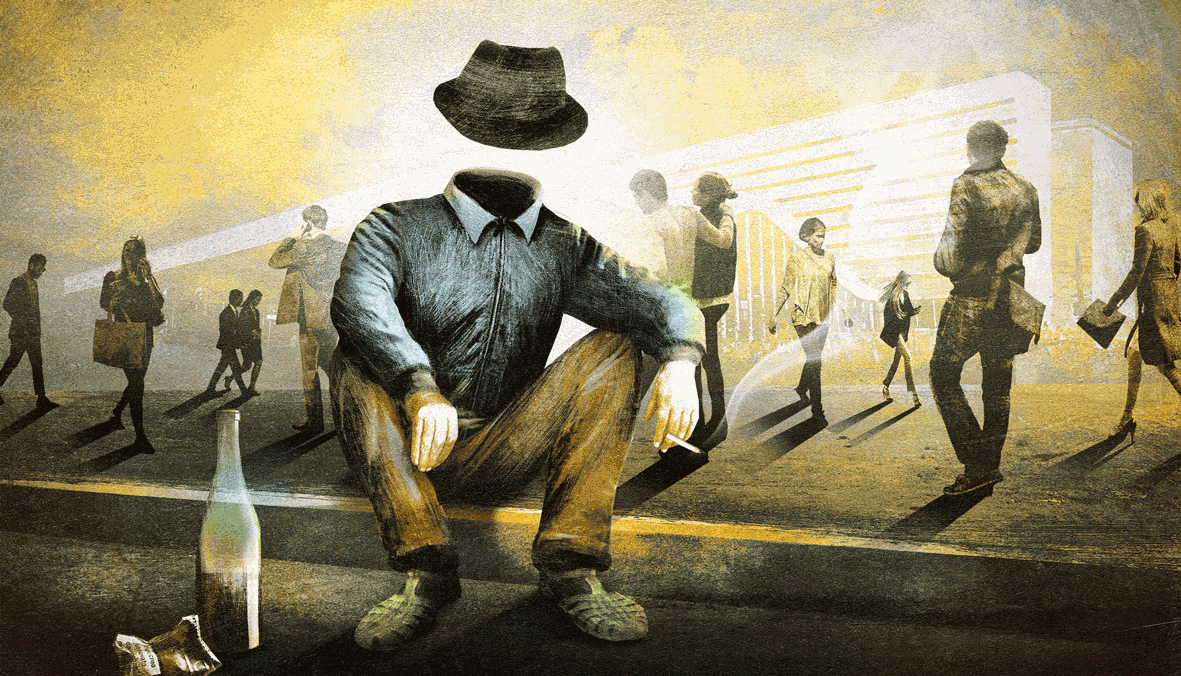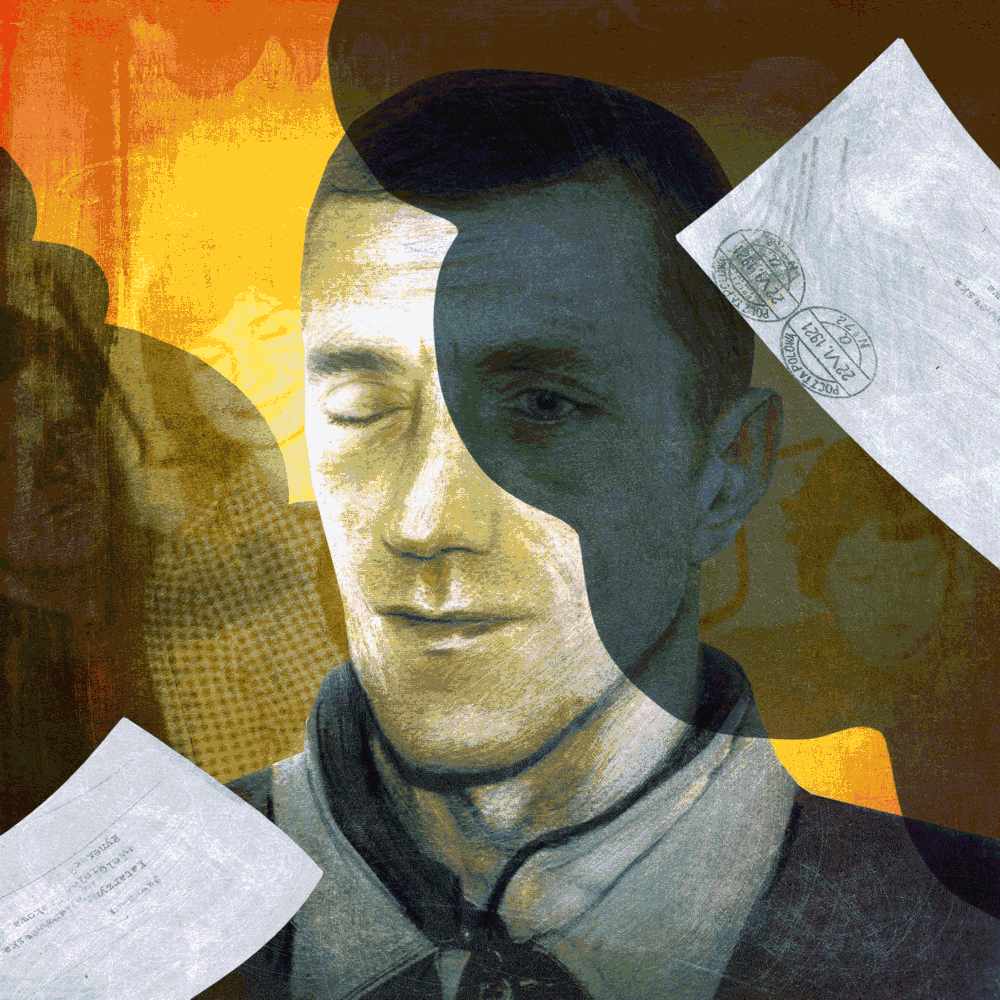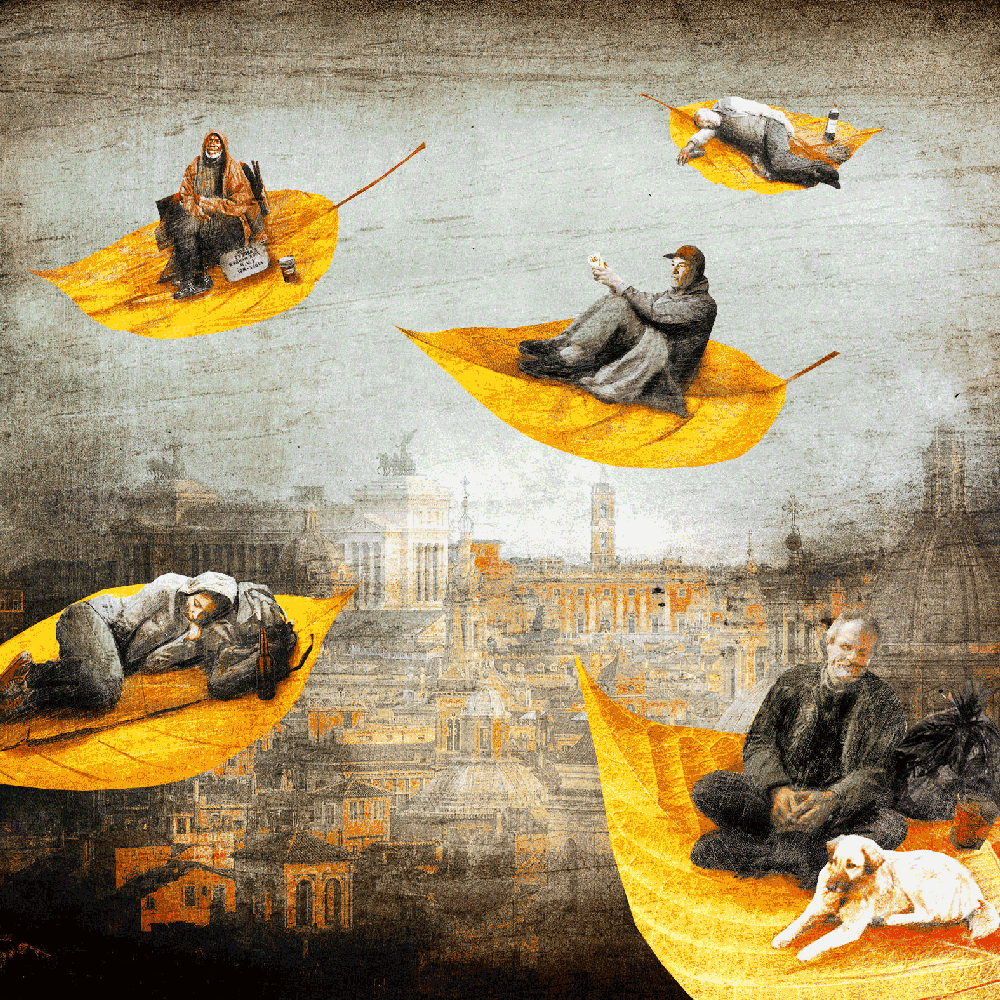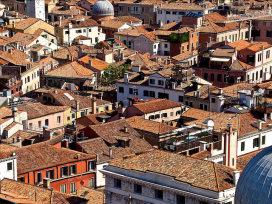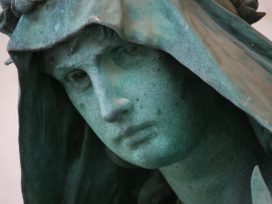One morning in early August, the court of justice in Rome is blinded by a dazzling light. At just 9am, the temperature has already hit 34 degrees and all ten hectares of the judicial district are deserted. Alongside the rough concrete staircase of Building C, a member of the cleaning staff bumps into a policeman and asks him how the inquiry into the incident that is tormenting the remaining few is going. ‘Any news on the collapse in the scanning office?’ ‘We’re working shifts to settle the case’, the policeman replies.
In the corridors, paved with grey granite and lit with neon lights, the buzz of air conditioners has replaced the humming of the photocopiers. On the office doors, notices state that the public prosecutors are away on holiday. Attilio Pisani’s door is ajar; the deputy public prosecutor still has a week to go before breaking for the holidays.
After graduating in 1980, he began serving as a prosecutor in 1983. He is a brusque character. ‘You must have heard about the collapse’, he declares. Perhaps it was due to the summer storms? ‘No, it was because of the air conditioning. The water from the air conditioners flooded a dropped ceiling and the whole thing gave way.’
Of the six to eight dossiers he deals with every day, there is one that no one cares about. Even he barely remembers it, so much so that he thinks he asked for it to be archived. Last April, it looked like a homicide case, but after the initial opinion of the forensic expert, Pisani had had three suspects released from prison, and was confident the case would soon be closed.
When the secretary brings over the file and says, ‘Sir, I think you requested a court summons’, Pisani doesn’t bat an eye. He flicks through his papers: ‘I did ask for a court summons, that’s right. But not for homicide; it was for bodily harm, because there’s no causal connection between the death and the injuries suffered by the plaintiff. The autopsy established he’d been injured, and his injuries would have healed within thirty days: in such cases, legal action ensues. If it had been fewer days, the victim would have needed to file a lawsuit. All being well, the trial will go ahead in 2021. It’s a case no one cares about.’
Delving deeper than the crime news
The short version of the story no cares about goes something like this: on the evening of 26 March 2018, Dariusz Jastrzębski, a 45-year-old man from Poland, was beaten up by three people at Roma Termini railway station and died in hospital three days later. End of story.
On 20 March, the newspapers reported the Five Star movement’s efforts to form a government after the elections, the expulsion of 150 US and European secret service agents from Russia, the arrests of a number of individuals connected with an Islamic State group in Latina, the hysteria raging across social networks following Fabrizio Frizzi’s funeral, the collapse of some stuccos in the Vatican, and so on.
Besides a few lines on the Repubblica website, Jastrzębski’s death went completely unnoticed. It is a crime story, but unlike other such cases that win over the media and captivate readers and viewers, it sunk into total oblivion. To understand why, we need a few more details: Jastrzębski was homeless, and he died after getting into a fight with other homeless people. In the hierarchy of news, deaths of homeless people are one step above stories about someone getting bitten by a dog, but rank below ‘storm during the August holidays’ or ‘the longest cat in the world’.
A crime story is never just a news story, though. The French historian Ivan Jablonka explains this in his book Laetitia, dedicated to an eighteen-year-old girl abducted and killed in Nantes, France, in 2011.
‘If you look beyond the few lines written about her in the newspapers – or the long TV shows dealing with the most famous cases – you get a glimpse into the mechanisms of justice, the role of the media, and how politics functions, with its accusatorial logic, as well as its rhetoric of compassion. In a society constantly on the move, a news story is an epicentre.’
For various reasons, so too is a case like Jastrzębski’s. As such, it merits closer inspection.
The fight
Let us begin on the evening of the fight. It takes place on 26 March 2018, after 9pm. In one last bout of winter, the clouds looming above the canopy of the station on Via Marsala seem to thicken. Underneath, some people are looking up at the sky to work out whether or not it’s going to rain, others are taking out money from the post office, smoking, listening to music, kissing, or shouting, and others still are setting about arranging cardboard boxes and covers ready to spend the night on the pavement.
The CCTV cameras at the railroad police capture Jastrzębski going up to three people. You can’t make out what he says to them, but you can see they get into an argument straight away. Thin, tall and shaky, Jastrzębski is on his own and can’t defend himself. The three others punch and shove him until he falls over and hits his head on the ground. He stays still for a few seconds, then gets up and walks away. After a few minutes, he collapses and doesn’t get up again.
Someone calls an ambulance; someone else calls the police. Two squad cars from the Viminale unit arrive, and the medics take him away. He has a blow to the head and a broken nose. After three days, he dies of heart failure. No one visits him at the hospital.
The arrests
‘The fight was over in a flash’, said Marco Napoli, deputy superintendent of the railway police (Polfer), in charge of the investigations. Tall, broad-shouldered, with a black beard streaked with grey, Napoli is 47 years old and is not wearing a uniform. He apologizes for the mess in his office, a room on the third floor of Roma Termini station, on Via Giolitti. He is standing in front of a desk covered with a mountain of papers; behind him, there is a photo of the President of the Republic, and, on the left, a window too small to brighten the room; it is 4pm in early June, and the lights are on.
Napoli explains that a few hours after the fight, the Viminale police station sent Polfer some information about the aggressors. ‘They’re young men who often meet here at Termini, all homeless’, says the deputy superintendent. Two of them were arrested on 1 April on Via Marghera, a few metres from the station. ‘They told us that the third guy would be coming in from Pisa in the afternoon, so we waited and arrested him too’, explains Walter Saraceni, the inspector in charge of the arrests. ‘They were a bit drunk, but they didn’t put up a fight. When we asked them how it all started, they said that Dariusz had done his business on their things, and they were pissed off’, Saraceni said. When I ask him why Jastrzębski would have done such a thing, the inspector simply shrugs his shoulders: ‘That sort of thing’s always happening out there, even for no reason.’
Two of the three detainees were born in the Czech Republic; they are 24 and 27 years old. The third one is Polish and is 42. They took them to Regina Coeli prison. When questioned, they confirmed the fight had broken after Jastrzębski had provoked them, and that they hadn’t meant to kill him; they had just shoved him. They were released a few days later after the public prosecutor Pisani ruled out manslaughter. The lawyer representing two of them said he never saw them again. I ask Napoli whether there is also a woman in the photos of the attack. ‘No, why?’
A hypothesis
Having first arrived in Italy around fifteen years ago, Dariusz Jastrzębski lived on the streets in Milan, but returned to Poland on several occasions. ‘I met him in Rome in September 2017’, says Janek, a 47-year-old Polish man.
When I met him, a few days before the August holidays, Janek’s right cheekbone was broken and he had a black eye. He had got into a fight with two Moroccan guys trying to steal his rucksack. He was smoking, perspiring, sitting in the Dei Caduti park, not far from Termini, alone in a city emptied out by the muggy weather and the holidays, where only tourists, priests, and a few bruised spectres like him remained.
‘Dariusz and I lived and slept on the streets together for a few months. He was a cheerful guy, but he often got pissed off, and always wanted to smoke and drink. Sometimes he would sing and dance.’ At the time, they were joined by Maria, a thirty-year-old woman from the Czech Republic. ‘They were engaged’, says Janek.
Tall and thin, with her hair in a bob and brown eyes, Maria used to look after him. She would go and fetch the sandwiches, hot tea, and covers that the Community of Sant’Egidio brought them every Tuesday, while he stayed sitting down. Shaven and tattooed, with black teeth, and often dressed in a vest despite the cold, he had lost an eye in jail in Poland, and would look daggers at anyone approaching him.
One evening in late February, I met all three of them near Porta Tiburtina, in the San Lorenzo district. Jastrzębski couldn’t get up and dragged himself along the pavement. He couldn’t speak Italian, so Maria translated for him. ‘My legs hurt, I can’t move them’, he repeated, with a totally blank look on his face. Why? ‘Years ago, I used to sell contraband cigarettes on the border with Russia; some policemen found out and shot at me’. Jastrzębski pulled his jeans down; there was a scar running all the way across his left thigh. Lorenzo D’Andrea, a volunteer for the Community of Sant’Egidio, who had come to give him a hot meal and some covers, had called the ambulance. Maria had convinced him to get in and gone with him.
‘He died because of her’, says Janek. In the hospital, they gave him a wheelchair, and he managed to get around just fine; he even seemed to have mellowed, but not long after that Maria left him. ‘Dariusz was a complicated person’, says his friend, ‘and she went off with a younger guy’. Janek claims Maria’s new boyfriend was one of the three guys that Jastrzębski argued with on the evening of 26 March. ‘He couldn’t stand the fact that Maria had left him for one of them’.
The railway police and the public prosecutor Pisani have never heard any mention of Maria. She never showed her face again in Termini.
A few weeks later, Lorenzo D’Andrea met the three men accused of homicide at the station: ‘They didn’t seem to grasp what had happened. Someone had died, but for them it was just a glitch.’
The last phone call
No one cares about Jastrzębski’s death – not the guys he fought with, not the media, nor anyone else for that matter. Except for one woman. On the afternoon of 29 March 2018, a policeman knocks on her door in Stawiguda, a small town in north-east Poland. He doesn’t go in; he delivers the news to her on the doorstep: ‘Ma’am, your brother is dead’. Then he hands her some documents and leaves.
‘I was struck by sadness’, says Jolanta Jastrzębski. ‘I’d seen that a Polish man had been killed in Rome on the TV, but I hadn’t taken any notice; I didn’t connect it with Dariusz.’
Two months later, I ask her if she would be willing to answer some questions. She agrees to write me a letter because she cannot bear for her brother’s story to be reduced to his death alone. Her words reveal the ripples Jastrzębski’s life left on the surface before he went under and help us probe one step further beyond the news story.
‘We were a large family’, she says; ‘nine siblings, seven boys and two girls. Dariusz was the second to last. He was born on 22 March 1973 in Dabrówno. Our mum brought us up because our dad used to drink.’ The balance was shattered when their mother died of cancer aged 53. ‘Dariusz was twelve at the time. At home with our dad, there was just me, him, and our youngest brother Cristofer left. But then he died too, two years later.’
It was at this time that Jastrzębski left school and went to live with his aunt in Slipsk. And it was there, in 1989, that he was to receive more bad news; his dad had died in a road accident. During the tumultuous years in which Poland could vote freely for the first time, the Berlin Wall came down and the Soviet Union collapsed, Jastrzębski had lost both his parents.
‘Some time later, I got married, and Dariusz came back to live with me. One day, he met a girl and fell in love. Not long after, they had a daughter, Sandra. But their happiness was short-lived. When Sandra was six months old, Dariusz’s partner left him for another man and moved to Olsztyn.’
Alone, Jastrzębski went to live in Olsztyn to be near his daughter, but then he disappeared. ‘I didn’t hear from him again until two years later: he sent me a letter to tell me he was in prison for theft. He had to serve a few years’ prison time, pay a heavy fine, and send alimony to his ex-partner.’
When they released him, he joined his sister again, and then went back to Olsztyn. ‘He met his daughter and spent some time with her until she was ten, when the mother forbade him from seeing her’, wrote Jolanta Jastrzębski. In Olsztyn, he fell in love again. The woman was called Silvia Hurdcwiz and, like him, she had had a complicated life. ‘They stayed together for a long time. They both had their problems; they were admitted to a psychiatric hospital. They lived and worked on some farms in small villages in Poland, as well as in the Czech Republic.’
In Italy, before Rome, Jastrzębski mostly lived in Milan. ‘On the telephone, he told me everything was fine, and that he was trying to earn some money to send to his daughter. But things never got any better. In 2015, he came to see me for a few days. Then he told me that he was going back to Italy with Silvia. He had promised his daughter he would take her with him, but he didn’t keep his word.’
When he said goodbye to his sister, Jastrzębski told her he didn’t know if he would be back. ‘At the time, I didn’t know what he meant. A year and a half ago, he called up my husband and asked him for 100 euros, so he could come back. But he didn’t give him an address or a telephone number, so there was nothing we could do. This year, he sent me a postcard from Rome, but there was no address. He just wished me a happy birthday. Then he called me, but when I answered he started crying and I couldn’t understand what he was trying to say.’ That was the last time Jolanta Jastrzębski would hear her brother’s voice.
To get the body back home, she had to ask for a loan from the bank and pay five thousand euros to the agency in charge of the transport. ‘In the coffin, I hugged him one last time. He looked so handsome.’
After that, she said she couldn’t write any more.
The context
That still isn’t the full story, however. As in any puzzle, you need a framework to stop the pieces from breaking apart and losing their meaning. If Jastrzębski’s story seems meaningless and of no interest to anyone, it’s also because no one realizes how important the larger context is: this isn’t just his story, it’s also the story of the 50 thousand people living on the streets in Italy and all those at risk of ending up there among the five million currently living in extreme poverty.
Until 2017, Italy was the only country in the European Union with no measures in place to support them. It does now; it’s called Income for Inclusion (Reddito di Inclusione), but it has limited funds: one billion euros for 2017 and 2018, followed by another in seven years’ time. According to the parliamentary budgetary office, the actual amount needed is between 5 and 7 billion euros a year.
Over the past ten years, plagued by a financial crisis that has plunged millions into poverty, homeless people’s lives have actually been made even more impossible. In 2009, Minister of the Interior and Northern League party member Roberto Maroni’s ‘security package’ made it harder for them to obtain residency, and therefore to vote, receive treatment, and get access to health care. Making this subject to the discretionary power of municipal offices and the ‘sanitary conditions of the building’ they lived in, he forced many to claim they lived in fictitious streets created in various municipalities. In 2014, the Renzi-Lupi ‘housing policy’ excluded them from applying for residency if they lived in ‘a building unlawfully, without the necessary documents’. In 2017, Minister of the Interior of the Democratic Party Marco Minniti’s security decree labelled them as one of the ‘marginalisation factors’ threatening the ‘respectability of the city’.
Finally, last March, Northern League undersecretary to the Ministry of the Interior Nicola Molteni presented a bill to the Chamber to introduce the crime of ‘vexatious begging’ into the penal code, an issue also close to Matteo Salvini’s heart, secretary of the Northern League and Minister of the Interior. To tackle this ‘problem of public order’, arrests and prison detentions for up to a year were proposed.
This is the perfect squaring of the circle: remembering the poor only when it comes to arresting them. This measure is bound to evoke an old refrain in Italy, a bit contemptible, a bit sad, and all too familiar in prison. A refrain heard as far back as 1561, when Pope Pius IV banned begging and imprisoned mendicants; in 1564, when beggars were banished from Venice; and in 1866, when the Minister of the Interior branded ‘the idle, vagabonds, and beggars’ as dangerous.
What distinguishes the present situation, if anything, is a certain tenacity and satisfaction in persecuting. The context surrounding stories like that of Dariusz Jastrzębski is now patterned solely on an obsession with safety, crime, and restraints. Within it, there are those that survive, those that go crazy, those that ask for help, those that don’t want it, those that get something back, those that get beaten up, those ripping their hair out in desperation, those that have held onto their dignity, and those that die without anyone even seeming to care.

